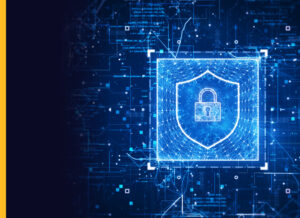Elections are the backbone of American democracy. Every vote counts, and agencies can help protect the integrity of voting by solidifying IT security. Keeping hardware and software updated is vital for successful cybersecurity. Through proper training and inter-organization communication, security industry leaders and Government agencies can help raise awareness on election-related issues.
Cyber Threat Landscape and Security Challenges in Modern Elections
By taking advantage of interest in elections, bad actors use common and highly trafficked websites to distribute remote access tools, allowing them to exfiltrate massive amounts of data. Traffic distribution system (TDS)—which are utilized to target ads to users, their search history and their location—are used by bad actors to push pop-up ads that prompt users to update their computer system or software. These pop-ups, hidden in TDSs, install ransomware and malware on the user’s device when clicked, making them difficult to find and fix. There is an uptick in these non-stop, ubiquitous attacks every election cycle. Bad actors target users that visit websites to stay updated on election news through pop-ups, phishing, web browser alerts and website subscriptions. All these methods lead users to socially engineered, compromised websites. However, agencies can prevent cybersecurity attacks at the office and at home by administering relevant security awareness training as part of a Human Risk Management Program.
Optimize Company Training on Security Awareness

Employees trust their organization as a valuable source of security information. Therefore, it is important that agencies communicate training and awareness effectively to all users. Some anti-phishing modules rely on realignment methods such as enrolling employees for anti-phishing training after they are misled by these kinds of threats. This can create an environment where employees question whether to alert IT when they click on false updates or phishing scams. Instead, agencies can focus on promoting positive behaviors such as congratulating employees who report phishing attempts, small bite sized trainings, and focused awareness campaigns around threats in the landscape. Here are several ways agencies can support their employees in learning and implementing security best practices during this election season:
Focus on real-time awareness: Agencies should prioritize keeping employees up to date on live threats. Traditionally, users were encouraged to keep systems up-to-date by accepting update notices. Now, to keep systems up-to-date while simultaneously discouraging pop-up clicks,
Contextualize email warning tags (EWTs): Emails are a great way to communicate awareness surrounding popular hacking methods. Including banners or visual cues, such as color themes, can help employees recognize company emails, giving them pause when faced with phishing threats. During election cycles, newsletters should focus on deepfakes and their effect on elections.
Utilize modules on demand: People trust their tech company or Government agency’s knowledge more than the news. Security awareness modules, training modules and weekly reminders can all help raise awareness among employees. By allowing users to access education modules at their own pace, agencies can pass on valuable knowledge in a way that is pressure and judgement free.
Focus on relevant topics: Modules should be relevant to employees. For example, training modules should be specific to each user’s job role. Short, one-to-two-minute targeted modules that hold the viewer’s attention can be more valuable than long, untargeted modules. During election cycles, the best modules cover election security, fake updates and safe browsing habits.
Teach at the trainee’s level: Agencies should meet employees at their level. Training should be tailored differently for users who may have more experience using the internet on a regular basis and users who did not have internet as a daily part of their education. Agencies must communicate with employees on security strategies, especially those with higher permission access.
Through all these methods, agencies should focus on the good, positively reinforcing employees and building trust between the individual and their organization.
Transform Company Culture Through Transparent, Unified Security
Focus on the Why: To protect from fake updates and phishing scams, organizations can implement training and assessment strategies into their work culture. Transparency is key: by explaining the purpose of phishing simulations, employers can get employees on board with cybersecurity training. Agencies can use realistic, election-themed phishing simulations during module assessments, which work best in real-time scenarios rather than during training. By monitoring results, agencies can gauge whether users are adequately equipped with the knowledge to report threats within simulations.
Encourage Feedback and Build Trust: By checking in with users after training modules and simulations, agencies can ensure the training has resonated with users, as well as ensuring users do not view trainings as punitive action. The most important part to training simulations is that employees report phishing or pop-up scams to their organization, regardless of if they clicked on them or not. Trainers and leadership teams should use positive reinforcement as corrective behavior to encourage employees to better understand modern scams and how to spot them. It is important to establish that the employee is not in trouble, lest they feel that they cannot report future scams to the organization. Instead, training administrators should build conversations around the reason for clicking. Whether or not the employee was in a hurry, if they had specific training, if they need help or if scams were fallen for at a particular time of day are all valuable information points for preventing future oversights.
Creating a Security Culture: Visual aids placed in common areas are also a valuable learning reinforcement because repetition can help employees remember the most important details surrounding security. Common-sense posters and announcements can be placed in elevators, breakrooms and even on the back of bathroom stall doors. Additionally, agencies should administer regular updates and ongoing education through newsletters, and programming should be consistent and personable. Agencies can:
- Send reminders
- Share real-world examples
- Encourage discussion
- Provide easy action items (such as restarting computers daily)
- Provide resources for learning and reporting
Unity is key to transforming organizations’ culture, creating awareness around digital hygiene and cybersecurity. Ultimately, repetition, consistency and discussion can help users stay safe and protect the organization from phishing, pop-up scams and other cybersecurity related risks during the election cycle.
To learn more about election security readiness, visit Proofpoint and Carahsoft’s webinar, Navigating the Cyber Threat Landscape: Election Scams. To learn more about Proofpoint’s Human Risk Reduction Solutions, please visit their website. Check out Proofpoint and Carahsofts’ past webinars into the cyber threat landscape.









